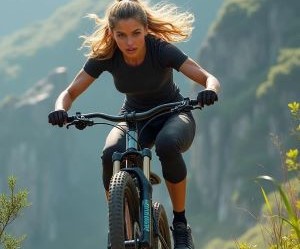Master endurance cycling in tropical climates with effective strategies. Learn hydration, heat adaptation, and training tips for peak performance.
WHAT ARE THE MOST POPULAR CYCLING TRAINING CAMPS?
Cycling training camps have become essential for riders looking to boost performance, refine technique, and immerse themselves in supportive environments. From amateur enthusiasts to elite professionals, cyclists travel worldwide to join camps offering structured coaching, scenic routes, and community. This article highlights the most popular cycling training camps, explaining why they stand out and how they shape modern endurance culture.

Why cyclists join training camps
Cycling training camps combine structured physical preparation with unique social and cultural experiences. Riders use them to kick-start pre-season training, recover form, or simply enjoy riding in beautiful landscapes with professional guidance. Beyond fitness, these camps provide camaraderie, mentorship, and insights into nutrition and strategy.
Key benefits of training camps
Training camps are designed to accelerate adaptation by offering intensive, immersive environments. Riders often log higher weekly volumes at camp than at home, supported by expert coaches and recovery facilities. Camps also provide exposure to terrains and climates that challenge skills—climbs, descents, and endurance routes in warm-weather destinations.
Structured training with expert coaching
Access to iconic cycling routes and terrains
Nutrition and recovery support
Community and shared motivation
For many cyclists, these benefits make training camps not only performance boosters but also memorable lifestyle experiences.
Top destinations for cycling camps
Certain destinations have achieved legendary status in the cycling community for hosting world-class training camps. Their combination of climate, terrain, and cycling infrastructure attracts amateurs and professionals alike. Here are some of the most popular spots globally.
Mallorca, Spain
Mallorca is arguably the world’s most famous training camp destination. Its varied terrain—rolling hills, coastal roads, and iconic climbs like Sa Calobra—makes it perfect for all levels. The island’s cycling infrastructure includes bike-friendly hotels, rental shops, and smooth roads, creating an ideal camp environment. Professional teams often base pre-season camps here.
Girona, Spain
Girona has become a cycling mecca, especially for professionals. Its proximity to both mountains and the Mediterranean provides diverse training options. Beyond routes, Girona boasts a vibrant cycling culture, with cafés, shops, and events centered around the sport. Training camps here offer immersion into a pro-like environment.
Tenerife, Canary Islands
The volcanic island of Tenerife is famed for high-altitude training. Climbs like Mount Teide allow riders to simulate Grand Tour conditions, while year-round sunshine makes it a winter haven. Many WorldTour teams use Tenerife for altitude camps to prepare for major races.
Tuscany, Italy
Tuscany combines cycling history with stunning landscapes. Rolling vineyards, Strade Bianche gravel roads, and classic climbs offer diverse challenges. Camps here mix training with cultural immersion, including local food and wine experiences that make recovery as memorable as the rides.
Mallorca – smooth roads and iconic climbs
Girona – professional hub and diverse terrain
Tenerife – high-altitude training for elite prep
Tuscany – culture and cycling heritage combined
These destinations illustrate why training camps are as much about environment and lifestyle as they are about performance.
How to choose the right camp
Selecting a training camp depends on individual goals, budget, and experience level. Camps vary widely in intensity, focus, and amenities, so riders must align choices with their objectives—whether preparing for a race, improving climbing, or enjoying social riding.
Factors to consider
For beginners, camps with strong coaching support and moderate mileage ensure steady progress without burnout. Competitive riders may prioritize altitude exposure, structured interval sessions, and recovery facilities. Lifestyle-focused camps appeal to those seeking equal parts performance and cultural immersion.
Training intensity and daily mileage
Coach-to-rider ratio for guidance
Location, terrain, and climate
Accommodation and recovery facilities
Budget and logistics also matter—travel accessibility, bike rental availability, and off-bike activities can shape the overall camp experience. Many camps now offer women-only or discipline-specific programs, catering to diverse rider needs.
Ultimately, the best training camp is one that balances athletic growth with enjoyment, leaving riders motivated and better prepared for their cycling goals.
From Mallorca’s legendary climbs to Girona’s pro culture and Tenerife’s volcanic altitude, the most popular cycling training camps continue to attract riders who want to push limits and connect with cycling’s global community. They’re more than fitness bootcamps—they’re gateways into a lifestyle where performance, travel, and passion converge.
YOU MAY ALSO BE INTERESTED






